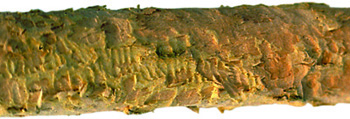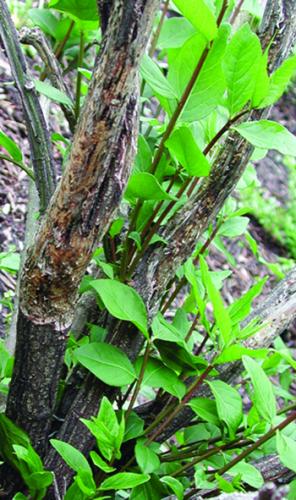Animal damage-- meadow voles and rabbits-- and Abiotic injury
July 30, 2015
Meadow voles (meadow mice) girdle plant roots and chew bark from around the base and trunks of trees and shrubs. Look for extensive runways through turfgrass leading from their burrows to woody plant material. Voles make surface runways (about 1.5 to 2 inches wide) through turfgrass, feed on the grass and leave piles of clippings and feces in the runways.


Small, grooved tooth marks in wood are indicative of vole injury.
Rabbits make sharp-angled cuts, neatly pruning off the ends of branches. They may also gnaw the bark off young trees or shrubs with thin, smooth bark. Look for piles of round, dry, brown fecal pellets near injured plant material.
Crabapples, burning bush, viburnums, yews and junipers are favored foods of both voles and rabbits during the winter months.
Management
Prune out badly damaged branches. If main stems are damaged, wait awhile before pruning to see if the injured tree or shrub will recover. Baited snap traps or rodenticides placed in runways can help control existing vole populations. Place baits in secure bait stations to prevent injury to non-target animals. Remove groundcover or mulch from around the base of trees and shrubs (3 feet away) to reduce protective cover for voles. Wrap trunks with tree wrap or hardware cloth to protect against girdling. Remove tree wrap after weather warms. To protect plants from rabbits, fencing should be at least two feet tall, with a one-inch mesh. Secure fencing with stakes or bury it a few inches in the ground to prevent rabbits going underneath. Repellents can be effective for limited periods of time, but may need to be reapplied frequently due to weathering.
Information on tolerant trees
For more detailed information about trees for urban environments tolerant of drought, salt, high pH and other conditions see the Urban Horticulture Institute website.
Print a PDF of this page: Animal damage– meadow voles and rabbits– and Abiotic Injury.



 Print
Print Email
Email



